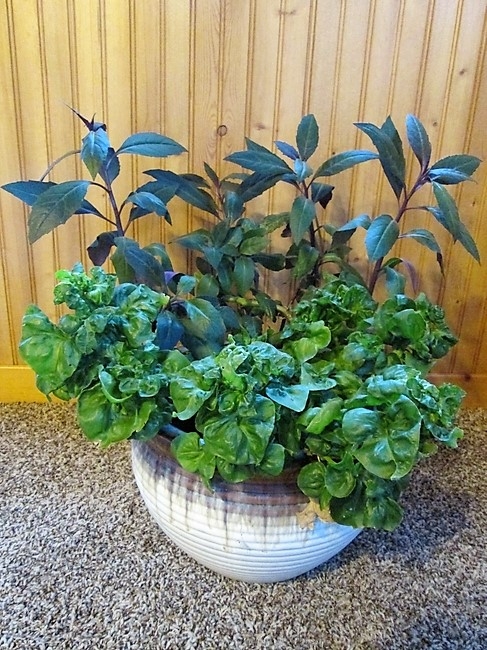In the constant search for green leafy vegetables that will do well in a hot climate I stumbled upon Brazilian Spinach (Alternanthera sissoo) and Okinawa Spinach (Gynura crepioides), and although a tropical plants I decided to give them a try in our dry high desert climate.
Brazilian Spinach: This plant forms a mat of bright green, crinkled leaves on stems about 1' long which flop and root wherever nodes touch the ground. It prefers part shade, and in many places it is grown as living mulch under fruit trees. It is not fussy about soil type, but does require warm temperatures, a fairly steady supply of water, plenty of organic matter and lots of nitrogen since it is a fast grower.
I acquired a couple of rooted pieces and planted them in pots indoors. They very quickly became established and once all danger of frost was past I planted one directly into the garden and the other remained in its pot but was also placed outside. The potted one grew vigorously all summer far outperforming the specimen that had been directly planted, and at the end of the year I once again brought it inside where it served as an edible houseplant. They may do well in planters with plenty of irrigation and shade from afternoon sun.
The leaves are crisp and mild and can be eaten raw in salads or added to other dishes, but if large quantities are to be consumed it is recommended that they first be cooked and strained because of the high levels of oxalate that they contain.
I found that the leaves are a little coarser than leaf lettuce and while not unpleasant they do not have a lot of flavor. I used them as an “emergency” lettuce when making sandwiches, and I certainly preferred them to Malabar spinach which I grew in previous years.
Okinawa Spinach: Is an attractive low-growing plant with purple tinged leaves. The cultural requirements are similar to Brazilian spinach. It can be eaten raw or cooked and young shoots are often used in stir fries or tempura dishes in Okinawa. It has a slightly nutty flavor with hints of pine in the younger shoots. If overcooked it has a tendency to become slimy.
Attached Images:
